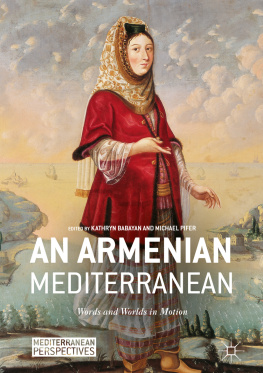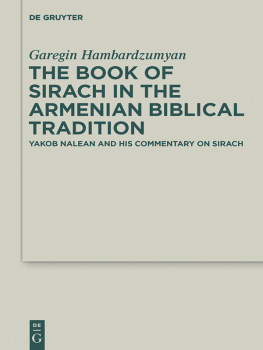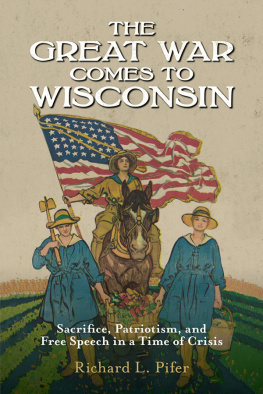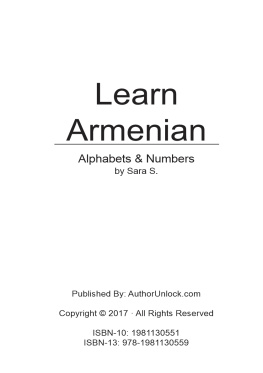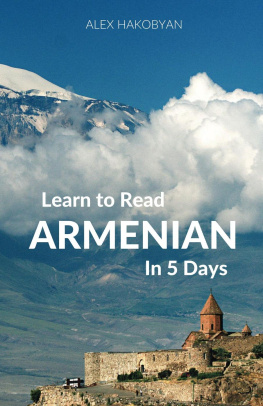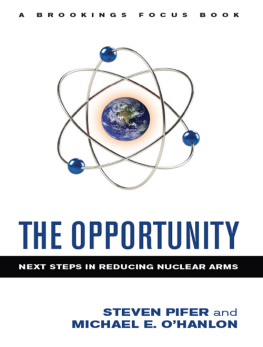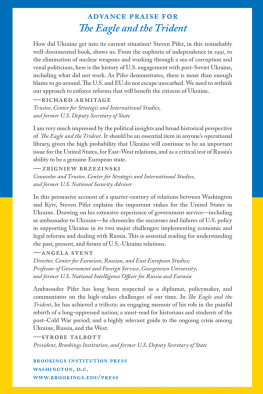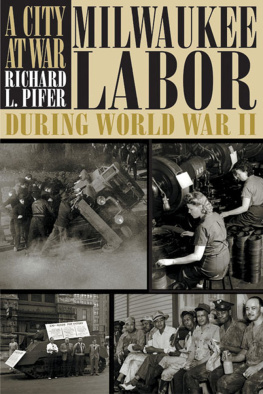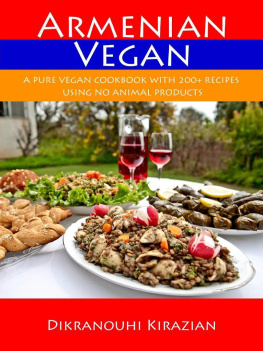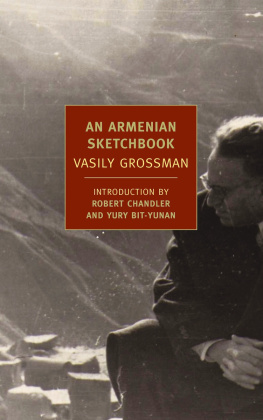1. Introduction: A Movable Armenia
In 1045 , Grigor Magistros, one of the most erudite figures of the Armenian world, entered into a heated argument with a certain Manazi, a Muslim, in Constantinople. When he had occasion to confront Manazi again, he recited his poem with great relish, reveling in the reported surprise of his Muslim counterpart.
There are many ways to frame this encounter, but one thing seems clear: it does not square so easily within a simplistic East-West binary, or even within the more traditional polemics one might expect of Muslim-Christian interaction. Quite obviously, Magistros enjoyed a fluency in multiple linguistic and cultural systemsArabic and Armenian, but also Latin, Greek, Hebrew, Persian, and Syriacthat do not map onto any tidy dichotomy between Europe and the Middle East. al-Manz was an avid collector of Greek scientific manuscripts. It seems clear that both men embodied multiple worlds at the same time.
The encounter between Magistros and al-Manz might seem extraordinary. But we should also ask: in what ways might it also be suggestive of a broader pattern, the mobility of Armenians across multiple cultural, linguistic, and religious domains? In other words, to what extent might Armenians represent a broader form of Mediterranean experience? As Sergio La Porta observes in this volume, scholars occasionally do include Armenians within the larger tapestry of Mediterranean historiography, to different ends, and sometimes to diminishing returns. Often, such gestures toward inclusiveness either serve to reinforce the larger assumptions about the region, or conversely to observe that Armenians do not fit those patterns, and thus, ostensibly, are not part of the same Mediterranean Basin. The inclusion of Armenian agents in Mediterranean Studies has rarely contributed to a more dynamic, cross-culturally integrated vision of the Mediterranean or its adjacent regions.
The same might be said, of course, about other underrepresented peoples in western scholarship, even within rigorously comparative fields such as World History, World Literature, and World Cinema. The real issue is not simply a matter of teaching the Armenian language(s) to more graduate students, or promoting a deeper knowledge of a rich, if sometimes insular, Armenian historiography among non-specialists. Rather, this issue is both methodological and theoretical in nature, and has implications that extend beyond any single field. Certainly, we ought to ask how Mediterranean Studies (or, for that matter, World History, World Literature, or World Cinema) might shape the ways in which we approach Armenian history, literature, and the visual arts. But we should also ask what Armenian Studies might do to those other fields.
Arguably, the problem of integrating area specialists within fundamentally comparative enterprises reflects a longstanding concern in the humanities. For instance, nearly twenty years ago, historian Sanjay Subrahmanyam drew attention to the challenge of reconciling the granularity of specialist knowledgelinguistic, historical, geographicalwithin fields that assume a cross-continental scale as their departure point. Thus, as he asks in his landmark essay Connected Histories:
There is also something to be said for methodological skepticism concerning comparative exercises that are based on an acceptance of what appears to be the broadest conventional wisdom in each of the area-based historiographies under consideration. These area specialists will merely find themselves either fitted in to a big picture, or left out; and no true dialectic engagement will be really possible here between the area specialists and the (even temporary) generalist. Is there a realistic methodological alternative, one that does not require one to become a specialist on everything?
Subrahmanyam offers one of several alternatives. His focus, like that of Sebouh David Aslanian in this volume, is on what he terms connected histories, which seek to move beyond the comparison of disparate peoples only. As Grigor Magistros demonstrates, the boundaries that Armenians transgressed and translated were not always geographic. Rather, they were so often religious, linguistic, ethnic, literary, and even visual in nature. To follow in the wake of this mobility, we will have to rebalance the calculus between area specialist and generalist knowledge in more ways than one.
In the case of Magistros, the transplantation of Arabic verse onto the soil of Armenian letters would have lasting consequences. As S . Peter Cowe has noted, other Armenians gradually began to treat poetry as a serious vehicle for discussing complex subjects, such as philosophy and history, using a similar mono-rhyme scheme. Magistross rewriting of the Bible was therefore the beginning of a new poetics, loosely modeled on Arabic literary standards, in Armenian letters. At the same time, if the context of this encounter seems to be typically Mediterranean, exhibiting a heightened cross-cultural and linguistic fluency, so too was its product. Although Magistros versified the Bible, it seems he wanted to prove his mastery in the very aesthetic tradition that al-Manz championed. As he argued to al-Manz, his adaptation was divinely ordained, guided directly by the Holy Spirit. What is most remarkable about this encounter, then, is that Magistros posited the superiority of Christianity to Islam through an argument about poetic equivalency, and not merely by composing a polemical treatise. This poetics moved, like the Armenian figures who mobilized it in verse, across multiple cultural and linguistic systems at the same time.
In a broad sense, one aim of this volume is to read an analogous poetics of cross-cultural interaction, pastiche, dialogue, exchange, competition, and collage in other contexts, each with an Armenian focal point. Thus, although we seek to offer fresh perspectives on Armenian experiences around the medieval and modern Mediterranean, we do not merely seek to shoehorn Armenians into Mediterranean Studies, World Literature, World History, or any other framework. Some chapters in our volume are aggressively comparative and connective, examining historical resonances and shared discourses between Armenians and their many counterparts. Other chapters, notably, do not attempt to place Armenians explicitly within a Mediterranean frame, instead seeking to use Armenian case studies as a way to make theoretical contributions to other comparative fields, or to rethink some of the basic premises of Armenian Studies. Finally, a few chapters are not concerned with the Mediterranean at all, but rather demonstrate that the cross-cultural mobility characteristic of an Armenian experience in and of the Mediterranean was never circumscribed by this region. Instead, as our contributors show, this mobility can be mapped in the Caucasus and Russia, as well as across a global stage. Simply put, the heightened mobility of Armenians across the landscapes of the Mediterranean world was not geographically exceptional, but can and should be excavated elsewhere.
To a limited extent, therefore, the widespread geographic scope of Armenian history, literature, and arts collectively can help to decenter the Mediterranean as the organizing frame through which we understand such cross-cultural fluency in the first place. In this sense, Armenian Studies can offer a more dialectic engagement with the field of Mediterranean Studies than a cursory inclusion of Armenian agents within Mediterranean historiography would suggest.
To help the reader navigate our broad disciplinary and temporal scope, we have organized An Armenian Mediterranean around five critical themes: rethinking boundaries, connecting histories, breaking national and imperial paradigms, texturizing diaspora, and placing statehood. These themes are meant to orient the reader broadly within the current state of Armenian Studies, but also to define our particular approach to the field and to suggest new directions for its future. In these pages, we therefore hope to offer a blueprint for an omnivorously comparative, deeply interconnected, vision of Armenian Studies: one that might serve as a model for other area specialists who must necessarily address broader questions of inclusion and exclusion within different frameworks of their own.

